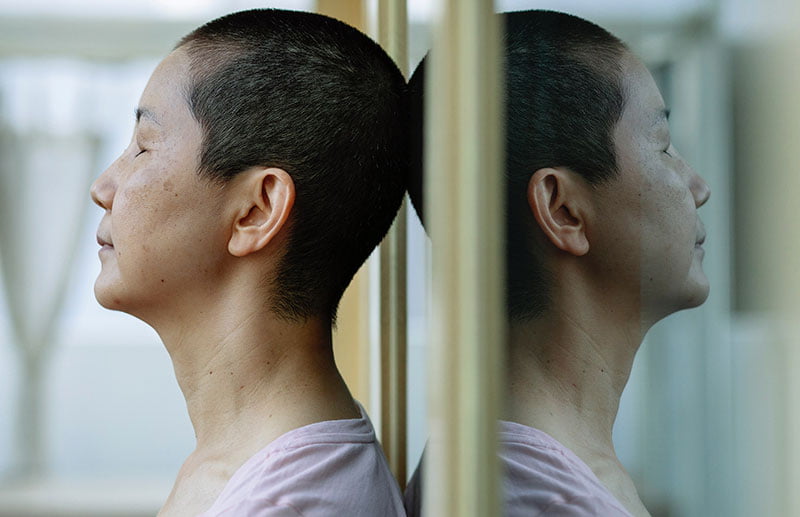What is CBT?

CBT stands for Cognitive Behaviour Therapy. Cognition describes what goes on in our heads and includes ways of thinking. Behaviours are actions we take or things we do. CBT is a type of therapy that applies strategies to change our thoughts and our actions so that they are more helpful for us. It is based on the notion that what we experience emotionally is determined by both what we think and what we do.
How did CBT Develop?
Early psychologists were known as behaviourists. That is, they studied patterns of human behaviour, in much the same way that the behaviour of other animals was studied. They looked at how humans (and other animals) learned patterns of behaviour. These studies were able to explain animal behaviour but couldn’t fully explain everything about humans and their behaviour because it did not look at one very important factor – the capacity of humans to think. What was needed was a way of examining humans that considered the power of thinking in shaping how humans react to things around them, such as other humans or situations. Thoughts, beliefs, interpretations and imagery are all aspects of cognitive therapy that were fused with early behaviourist methods to form CBT.
Why Choose CBT?
CBT has been extensively studied in rigorous clinical trials and has empirical support. CBT is structured, goal oriented and focuses on immediate difficulties as well as long term strategies. It is flexible, individualised and can be adapted to a wide range of individuals and a variety of settings.
Where Do We Start?
Unlike older forms of therapy such as psychoanalysis, CBT does not always require a long history going all the way back to childhood. CBT is focused on the here and now and begins with an assessment of the thoughts, feelings and behaviours that have brought you to therapy or are getting in the way of your ability to fully function.
Who Can Be Helped By CBT?
CBT can help many people.
CBT gives people the tools to address emotional challenges such as:
- Managing symptoms of mental illness
- Preventing a relapse of mental illness symptoms
- Treating a mental illness when medications aren’t a good option
- Learning techniques for coping with stressful life situations
- Identifying ways to manage emotions
- Resolving relationship conflicts and learning better ways to communicate
- Coping with grief or loss
- Overcoming emotional trauma related to abuse or violence
- Coping with a medical illness
- Managing chronic physical symptoms
Therefore, CBT is used to treat a range of psychological problems including:
- anxiety
- anxiety disorders such as social phobia, obsessive-compulsive disorder or post-traumatic stress disorder
- depression
- low self-esteem
- irrational fears
- hypochondria
- substance misuse, such as smoking, drinking or other drug use
- problem gambling
- eating disorders
- insomnia
- marriage or relationship problems
- certain emotional or behavioural problems in children or teenagers.
What Does it Involve?
CBT is a combination of cognitive and behavioural therapy. It combines ways of thinking with ways of acting. It has a number of core interventions used to target problematic behaviours or ways of thinking that will reduce emotional suffering.
For example, CBT uses a type of questioning that helps people reach a conclusion without directly instructing them. Questions asked in therapy are intended to encourage the person to query or question their view and develop new outlooks. Self-driven discovery is a core feature of CBT. For example, “How do you feel? What went through your mind?” are basic assessment questions that may be used.
CBT can also involve the following:-
Cognitive restructuring:
This is s about learning to identify and then challenge negative or unhelpful thoughts and replace them with more realistic and balanced thoughts. For example, if a person is catastrophising; “I spilt some milk, I ruin everything I touch” we might ask them to come up with evidence to prove they, in fact, do ruin everything. By looking at this, the person will realise that their belief is not correct, and they will gain a different perspective. It will help them to change their opinion of themselves or of others around them.
Behavioural experiments:
Behavioural experiments are planned experiential activities based on experimentation or observation which are undertaken by people in or between cognitive sessions. They are designed, usually in session by both the client and the therapist, to test certain ideas. Their primary purpose is to obtain new information which may help to check whether existing beliefs are correct or valid and to see if there might be other ideas or beliefs that are more helpful,
Psychoeducation:
The saying “knowledge is power” is a cornerstone of CBT. Your therapist may provide you with written material, brochures or links to audio and video recordings so that you can understand psychological problem and dismiss unhelpful fears or beliefs that may be keeping you stuck or causing you unnecessary pain.
Goal setting:
CBT is focused on measurable outcomes and is time limited. It often includes a session in which goals are developed by a client and therapist working together. These goals act as a roadmap for therapy.
Problem solving:
Problem solving in CBT involves five steps.
- Identify a problem
- Generate a list of possible solutions
- Evaluate the strengths and weaknesses of each possible solution
- Choose a solution to implement
- Implement the solution
Problem solving is a broad term. It is often assumed that humans innately know how to problem solve but CBT recognises that problem solving is a skill which can be practiced in order to reduce the negative impact of psychological or physical illness.
Self-monitoring:
Self-monitoring involves tracking behaviours, symptoms or experiences over time and sharing them with your therapist. The most common type of self-monitoring involves using a diary. For example, someone with poor sleep habits may keep a sleep diary that allows them and their therapist to keep track of sleep patterns and the associated thoughts and feelings.
Real-life work:
CBT therapists sometimes take therapy out of the office and into the real world to help with assessment or carry out a behavioural experiment. Such real-life (“in-vivo”) work can be invaluable. For example, many people with obsessive compulsive disorder are unaware of the pervasive and ritualised nature of their behaviours and hence we can’t always understand the problem unless we can directly observe it. It is also important to check that changes in a client’s beliefs are translated into real world settings so it may be helpful to do experiments in real-life with the therapist accompanying the client.
Imagery and role play:
Many clients have difficulty recognising their negative automatic thoughts or thinking styles. One useful way for a therapist to help a client recognise these thoughts is through recalling a problem, experience or specific event in detail and as vividly as possible.
Grounding strategies:
These are a type of distraction technique that can be helpful in managing mental or physical intrusions (e.g. unwanted images or bodily sensations) and urges. The intention is to ground a person back in the present if they are dissociated for a time or to ground them in a safe ‘place-in-mind’ or body if they are distressed.
Physical strategies:
CBT teaches approaches to relaxation, controlled breathing, physical exercise, applied tension and sleep hygiene. These involve both behavioural and cognitive strategies to better manage distress.
CBT is Collaborative
One of the guiding principles of CBT is that the client and the therapist work together and collaboratively. The therapist is not a teacher but rather a guide who walks the path of therapy with the client, helping them to engage in new ways of thinking and behaving.
CBT practitioners use open-minded curiosity. They respect clients’ beliefs, emotions and behaviours, never assuming they know how the client thinks or feels. CBT practitioners use genuine concerned interest and careful listening to get a real sense of how it is to be the client. They take time to set a shared agenda, make it clear that feedback is welcome and carefully establish a client’s goals for treatment. Collaboration means clients gradually take a more active role in devising homework and setting agendas so that they can better help themselves in the future.
CBT Takes Practice
CBT is not simply talking. It focuses on skill building and requires between-session tasks to be completed – practice makes perfect, and change can sometimes be hard as well as necessary. Sometimes, new behaviours are hard to make into habits. The best way to make new behaviour patterns is through practice. The best way to learn how to smooth out strong emotions and combat unhelpful thoughts is to practice helpful thoughts and behaviours. Your therapist will begin with an assessment before helping you identify what positive behaviours and/or thought challenging you need to practice.
How Long Does Therapy Go For?
Unlike many other therapies CBT is a relatively short-term therapy ranging from 5 to 20 sessions. The length of any course of CBT is determined by the type of disorder or situation, its severity and how long someone has had the symptom. It may also depend on how much stress someone is experiencing and how much support they receive from family members or other people.
What is the success of CBT?
- CBT can be as effective as medication to treat depression and anxiety
- CBT is often more affordable than other therapies
- CBT has been found to be effective on-line and face-to-face
- It is an effective short-term treatment
- CBT is the leading evidence-based treatment for eating disorders
- A 2018 meta-analysis of 41 studies found that CBT helped to improve symptoms in people with anxiety and anxiety-related disorders, including obsessive-compulsive disorder and post-traumatic stress disorder
- CBT has a high level of empirical support for the treatment of substance use disorders, helping improve self-control, avoid triggers, and develop coping mechanisms for daily stressors
- CBT has been proven helpful in those with insomnia as well as those who have a general medical condition that interferes with sleep, including those afflicted with pain or mood disorders such as depression.
